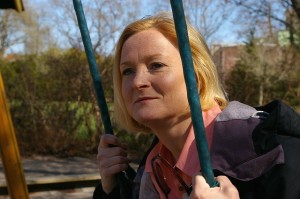- Calls to this hotline are currently being directed to Within Health, Fay or Eating Disorder Solutions
- Representatives are standing by 24/7 to help answer your questions
- All calls are confidential and HIPAA compliant
- There is no obligation or cost to call
- Eating Disorder Hope does not receive any commissions or fees dependent upon which provider you select
- Additional treatment providers are located on our directory or samhsa.gov
Middle Aged Women and Body Image
Contributor: Sharon McConville, MB, BCh, BAO
How Does This Affect Women
In general, body image and eating issues are perceived to be the preserve of younger women; however, recent research suggests that this is not the case. Indeed, it has been shown that fifty-four is, in fact, the age at which the average woman is least satisfied with her body [1].
Most women in midlife rate their ideal figure as smaller than their actual size and want to be thinner even when they are within the healthy weight range. The literature suggests that appearance is just as important to “self-concept” – or how women view themselves and their worth – in 35 to 65-year-olds as it is to those in younger age groups [1].
Given that women in midlife experience significant alterations in their bodies, including an average weight gain of 5-10lbs, skin changes such as sagging and wrinkling, and changes in fat distribution, it is perhaps not so surprising that so many develop body image concerns at this stage or that inpatient admissions for eating disorder treatment in women aged 35 and over are increasing [2,3].
How Prevalent Are Body Image Concerns in the Middle-Aged Population?
One large study showed a very high prevalence of body image dissatisfaction amongst women aged 50 and over [3]. Of the participants:
- 71% were currently trying to lose weight
- 79% felt that weight or shape played a “moderate” to “the most important” role in their self-concept
- 70% were dissatisfied with their weight and shape compared to when they were younger
- 84% were specifically dissatisfied with their stomachs [3]
Those with a high body mass index had greater weight dissatisfaction whilst those with a low body mass index expressed a greater dissatisfaction with their skin [3].
 Other research has found that obese women have endorsed the greatest body image dissatisfaction and disordered eating compared to normal weight and overweight midlife women, with overweight and obese women in their midlife being subjected to increased societal prejudices.
Other research has found that obese women have endorsed the greatest body image dissatisfaction and disordered eating compared to normal weight and overweight midlife women, with overweight and obese women in their midlife being subjected to increased societal prejudices.
Compared to normal weight midlife women, overweight and obese women are often perceived to be further from Western society’s thin ideal female body.
Common forms of disordered eating among midlife women include but are not limited to food restriction, calorie counting, chronic dieting, extreme exercise and more.
In biologically susceptible women, disordered eating can lead to the development of a pathological and chronic eating disorder, such as anorexia, bulimia and/or binge eating disorder.
What Makes One Woman Develop Body Dissatisfaction Whilst Another Does Not?
Not all middle aged women are dissatisfied with their bodies, however. Factors which are protective include:
- Being in a consistent relationship
- Being in a Long-term relationship
- Having children
- Having job security [1]
It has been suggested that these factors combine to divert women’s attention from their body image and reduce the pressure which they perceive to attain the “thin ideal” [1].
This is in contrast to a woman in midlife who has not yet found a partner, for example, and who therefore feels compelled to stay thin and, by social extension, attractive. Furthermore, a factor referred to as “cognitive control,” or “The ability to accept circumstances as they are and adjust the self to fit in with the environment has been identified as being important [1].” A woman who has high cognitive control is able to reappraise and accept her changing body as she enters middle age.
The Importance of Self-Care
Self-care has also been shown to be an important indicator of whether a middle-aged woman will experience body image concerns. For example, women who make time for themselves regularly, and take care of their own needs without feeling guilt have lower levels of body image concern and less disordered eating than women who do not take time to care for themselves [1].
Caring for the body may be incompatible with body dissatisfaction which often leads to food deprivation. It turns out that low self-care is associated with a higher body mass index, which may explain why body image issues are a greater problem in this group of middle aged women [1].
Societal expectations that a middle aged woman will look after others before attending to her own needs may contribute to this phenomenon [1]. Many women are accustomed to putting their own physical, mental, emotional and spiritual needs on the backburner to care for other family members, which can contribute to overall poor self-care. Adapting self-care skills in midlife may feel difficult for a woman who has not prioritized her own needs; however, this is an important step toward building better body image.
How Do Eating Disorders Present in Women Who Are Middle Aged?
When women in midlife present with eating disorders, they may have a chronic illness which has begun in earlier life, a relapse of a disorder which has been in remission, or a late-onset illness with no prior history [3]. In one review, 69% of those presenting over the age of 50 had a late-onset eating disorder, a fact which could be attributed to changes which occur around the menopause [3].
It has been suggested that, in mid-life, the eating disorder is a focus which takes away the need to face up to major life changes:
- Parents aging
- Children leaving home
- Career transitions
- Divorce from a long-term relationship
- Or that it is a “defense against mortality” – an over-reaction to the health risks associated with obesity [2].

Women in midlife will also experiences physical changes in their body that can be triggering, especially to a woman who is simultaneously going through a major life change, as described above.
For example, the process of menopause can influence many physical changes in the body, some which may be uncomfortable and difficult to adapt to.
While weight gain may be a normal physiological response to hormonal changes in the body, a woman may find it overwhelming and challenging to adjust to these fluctuations within herself. This can trigger more extreme behaviors as a means of “controlling” something that suddenly seems unmanageable.
In midlife eating disorders, excessive exercise is a common reaction to normal weight gain, whilst resorting to plastic surgery is one response to skin changes [2]. One study showed that when eating disordered inpatients aged forty or older were compared with younger inpatients, more had anorexia rather than bulimia, the severity of the eating disorder was greater, but there was actually less body image distortion [4].
The older patients also tended to have more concomitant affective disorders and suicidal ideation, and there was a trend amongst them towards substance misuse [4].
This suggests that middle-aged people with eating disorders severe enough to require inpatient treatment have very specific needs which must be addressed by the multidisciplinary team. Many middle-aged women may hesitate to ask for the help needed to recover or admit the struggles they are facing, many times due to the stigma that surrounds eating disorders in older populations.
Eating disorders are often stereotyped to occur in young, adolescent white females, but the reality is that eating disorders do not discriminate against age. Eating disorders occur across the age spectrum, including during middle age.
How Can Body Image Be Improved in Middle-Aged Women?
Although they are two different populations, the principles behind improving body image in middle-aged people who have a diagnosed eating disorder and those who do not are the same. Psycho-education is the cornerstone of inpatient treatment and emphasizes the facts about the normal aging process, such as that the degree of thinness enjoyed by young women may be unrealistic for more mature women because of metabolic and hormonal shifts [2]. Awareness should also be raised about this process in the general population.

In therapy, in patients are helped to find the source of their eating disorder, such as unresolved conflict; in the community, women should be helped to shift the locus of their self-worth from external appearance to internal personal growth [2].
Middle-aged women with eating disorders or body image concerns should be challenged to ask themselves why staying youthful is so important to them and should be helped to value the functional bodies which they do have [1].
All women in this age bracket should be encouraged to engage actively in self-care as a protective measure, and to embrace the positive achievements of their lives to date, such as the development of good friendships, and their inner beauty [1,2]. In this last sense, an element of spirituality may help women to come to terms with changes in her physical state.
Acceptance
In summary, women experience incredible changes in their bodies as they pass through middle age. Body image concerns are ubiquitous and can lead to disordered eating behaviors or clinical anorexia, bulimia or binge eating disorder.
Some women are more susceptible than others but, by engaging in good self-care and learning to embrace the change as it occurs, all women can make themselves less vulnerable to the psychological and physical damage which body dissatisfaction can incur. Seeking out appropriate help and support is also a necessary and important part of facing the many transitions that might occur during a woman’s midlife.
References:
[1] McLean, S et al: Factors associated with body dissatisfaction and disordered eating in women in midlife. International Journal of Eating Disorders 2010;43:527-536[2] Zerbe, K and Domnitei, BS: Eating disorders and middle age: part two. Eating Disorders Review 2004;15:3
[3] Gagne, DA et al: Eating disorder symptoms and weight and shape concerns in a large web-based convenience sample of women ages 50 and above: results of the gender and body image (GABI) study. International Journal of Eating Disorders 2012;45:832-844
[4] Cumella, EJ and Kally, Z: Comparison of middle-age and young women inpatients with eating disorders. Eat Weight Disorder 2008;13:183-190
The opinions and views of our guest contributors are shared to provide a broad perspective of eating disorders. These are not necessarily the views of Eating Disorder Hope, but an effort to offer discussion of various issues by different concerned individuals.
We at Eating Disorder Hope understand that eating disorders result from a combination of environmental and genetic factors. If you or a loved one are suffering from an eating disorder, please know that there is hope for you, and seek immediate professional help.
Published on June 29, 2017
Edited And Updated By: Crystal Karges, MS, RDN, IBCLC
Reviewed By: Jacquelyn Ekern, MS, LPC on June 29, 2017
Published on EatingDisorderHope.com

